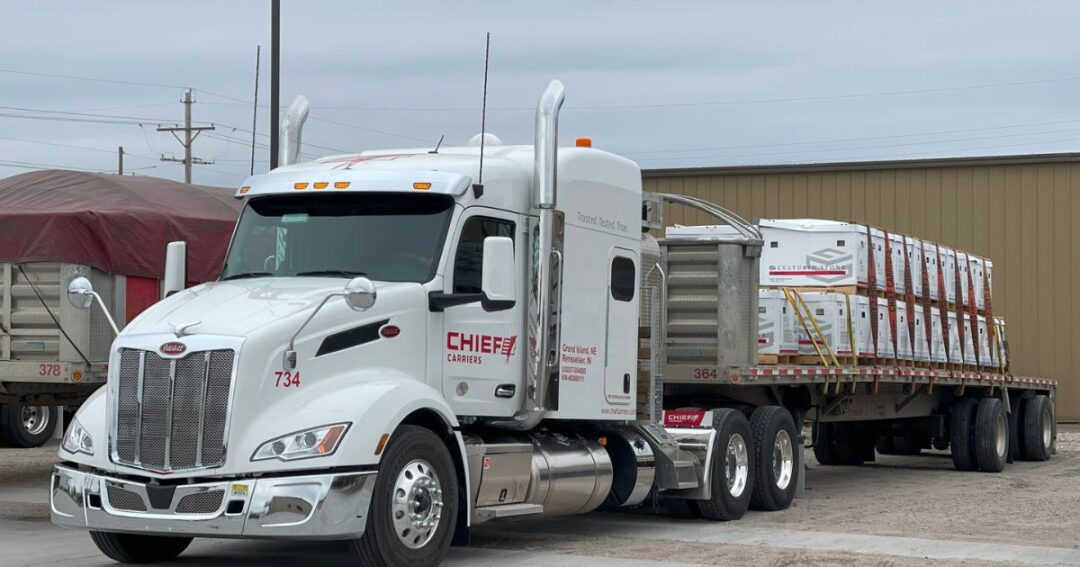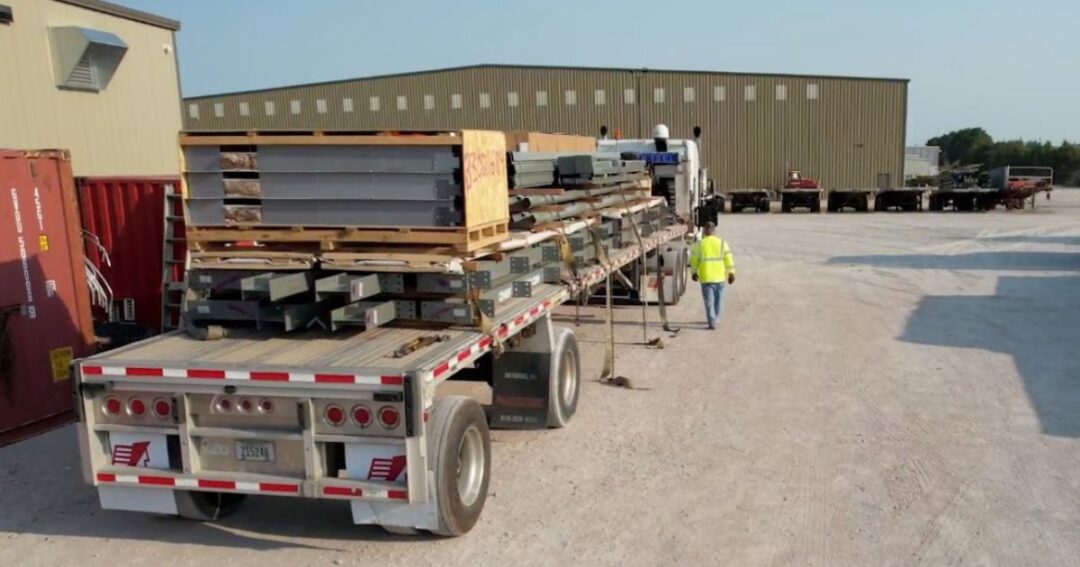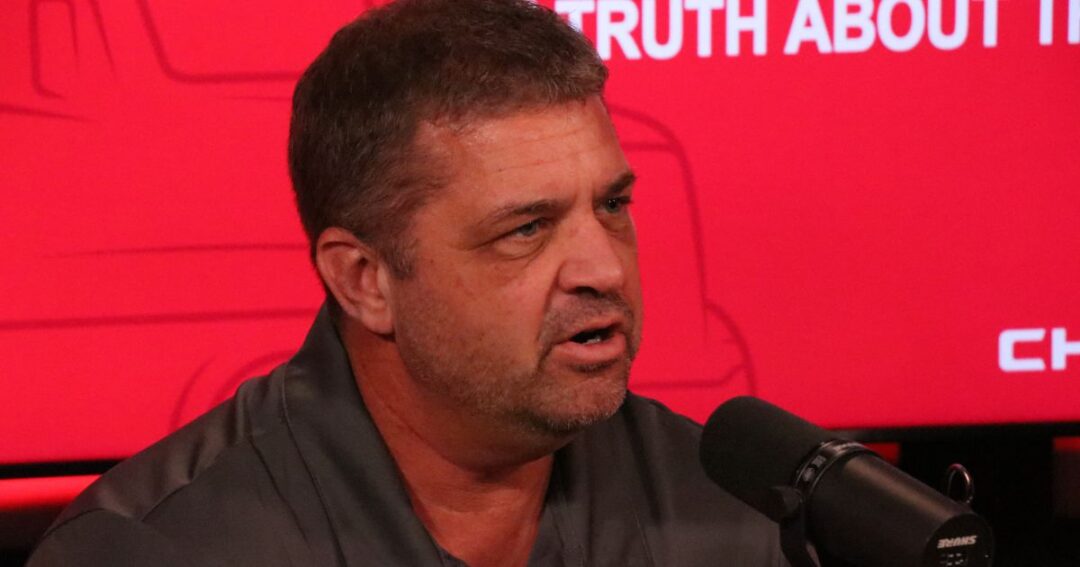Load Securement Standards: A Clash Between Federal and Commercial Safety Rules
Load securement regulations can be a confusing territory for truck drivers, especially when facing conflicting guidelines.
The Federal Motor Carrier Safety Administration (FMCSA) and the Commercial Vehicle Safety Alliance (CVSA) each maintain their own set of standards, and these don’t always align.
In this Driven Too Far post, we’ll explore these differences and why understanding both sets of guidelines is crucial for safety on the road.
Understanding the Two Standards
When it comes to load securement, drivers must navigate two distinct sets of guidelines. This regulatory split creates unique challenges for drivers who are simply trying to do their jobs safely and legally.
At first glance, having two different standards might seem unnecessary. After all, shouldn’t one clear set of rules be enough?
But the reality is more complex. These two standards serve different purposes in the industry—one establishing legal minimums and the other promoting best practices for optimal safety.
The challenge comes when drivers find themselves caught between these two standards. While both aim to keep our roads safe, they approach this goal differently. It’s similar to the difference between passing a test with the minimum required score versus achieving excellence, both count as passing, but one demonstrates a higher level of mastery.
Let’s break down these regulatory resources to understand how they differ and why both matter.

The “Green Bible” FMCSA Regulations
Most drivers are familiar with the FMCSA regulations book, commonly known as the “Green Bible.”
This government-issued guidebook provides baseline requirements for load securement, but it comes with some limitations:
- Contains general, sometimes vague guidelines
- Leaves significant room for interpretation
- Provides basic securement requirements
- Focuses on minimum standards for compliance
The CVSA Handbook Raising the Bar
The Commercial Vehicle Safety Alliance (CVSA) handbook takes a more comprehensive approach, offering detailed guidance that goes beyond basic requirements:
- Includes specific diagrams for various load types
- Specifies exact placement of straps and chains
- Provides clear, practical guidance
- Emphasizes best practices for maximum safety

Real-World Consequences: Two Eye-Opening Stories
At Chief Carriers, we’ve encountered situations that illustrates why understanding both standards is crucial for safety.
Meeting Minimum Requirements Isn’t Always Enough
Recently, one of our drivers, Ted, found himself in a discussion about securing five eye-to-the-sky coils.
Looking at his FMCSA “Green Bible,” Ted insisted he had enough securement for the cargo’s weight.
Technically, he wasn’t wrong, but he was missing crucial safety elements.
Our training manager noticed the absence of cross straps at the first and last coils, a requirement detailed in the CVSA handbook.
While Ted met the FMCSA’s minimum requirements, he wasn’t following the enhanced safety standards we maintain at Chief Carriers.
When Standards Make the Difference
Another incident drove home the importance of following enhanced securement standards.
On I-70 near Kansas City, one of our drivers, Anna, encountered a sudden traffic stoppage.
Despite having the minimum required number of straps according to FMCSA guidelines, her coils came loose and rolled onto the interstate.
Thankfully, no one was injured, but the incident highlighted a critical point: meeting minimum standards doesn’t always ensure maximum safety.
The missing cross straps required by CVSA standards but not explicitly detailed in the FMCSA guide, might have prevented this dangerous situation.
Navigating the Double Standard
The existence of two different standards leads to genuine confusion and frustration among drivers trying to do their jobs correctly. Many drivers find themselves confidently following FMCSA guidelines only to learn they’re not meeting their company’s higher CVSA-based standards.
Following minimum standards might keep you legal, but it may not keep you safe in real-world conditions.
Here’s what you need to know:
Why Two Sets of Standards Exist
The trucking industry’s dual standards evolved from different but complementary needs. FMCSA developed baseline regulations to establish consistent legal requirements across all carriers, while CVSA emerged from law enforcement’s practical experience with cargo securement incidents.
Together, these standards create a comprehensive approach to load securement safety:
- FMCSA regulations establish the legal minimum requirements
- CVSA standards provide enhanced safety guidelines
- Law enforcement often refers to CVSA standards during inspections
The Challenge for Drivers
Professional drivers face a balancing act when dealing with load securement regulations.
Being compliant with federal minimums doesn’t guarantee passing roadside inspections, and navigating between different standards requires constant vigilance and attention to detail.
This dual-standard system creates real challenges:
- Meeting FMCSA requirements might not satisfy roadside inspectors
- Different enforcement officers might interpret requirements differently
- Companies often set their own standards based on both sets of guidelines

Best Practices for Load Securement
Understanding and implementing proper load securement practices creates both compliance and safety on the road.
Let’s explore the essential practices that every professional driver should follow.
1. Aim for Higher Standards
While meeting FMCSA minimum requirements keeps you legal, aiming for CVSA standards keeps you safer. Think of FMCSA regulations as your foundation, not your ceiling.
When securing any load, always ask yourself if additional measures could make it more secure.
For example, if the minimum requirement calls for two straps on a piece of equipment, consider whether adding a third would provide better stability. The extra few minutes spent adding additional securement could prevent hours of delay if something goes wrong on the road.
2. Know Your Cargo
Different types of cargo present unique securement challenges. Understanding these differences can mean the difference between a safe delivery and a dangerous situation.
Take coiled steel, for instance. It’s not enough to simply throw on the minimum number of straps.
Proper placement is critical. Cross straps at the front and rear of coiled steel loads provide crucial stability during sudden stops or sharp turns, as we learned from Anna’s experience.
Multiple pieces require special attention to prevent shifting and movement. Each piece needs individual securement, and you must consider how they might interact with each other during transit.
Weight distribution isn’t just about your axle weights, it directly affects how your cargo behaves during transport and how effectively your securement methods work.
3. Document Everything
Professional drivers know that thorough documentation protects both them and their cargo.
Start by photographing your load from multiple angles before you leave the shipper. These photos should clearly show your securement methods and the condition of the cargo.
Keep relevant pages from both FMCSA and CVSA guidelines easily accessible in your truck. When in doubt about a particular type of load, these references can provide immediate guidance.
Many experienced drivers keep a binder with common securement scenarios they encounter, along with notes about what works best.
Remember to document any special instructions from shippers or your company’s safety department.
These notes can be invaluable when you encounter similar loads in the future or if questions arise about your securement methods.

The Impact of Proper Securement
Every decision about load securement carries significant weight. While meeting minimum requirements satisfies basic regulations, the true impact of your securement choices extends far beyond simple compliance.
Professional drivers understand that proper load securement represents the cornerstone of highway safety.
A single securement failure can trigger a cascade of consequences that affect drivers, carriers, and the public at large.
Safety Above All
Improperly secured loads can break free during sudden stops or sharp turns, endangering not only you but also other motorists sharing the highway. A single securement failure can turn a routine delivery into a life-changing tragedy.
The Cost of Carelessness
Cargo damage from inadequate securement creates a ripple effect of financial consequences. Beyond the immediate cost of damaged freight, carriers face delivery delays, unhappy customers, and potential loss of future business.
Legal Ramifications
Legal consequences of securement failures can devastate both drivers and carriers. From regulatory fines to civil lawsuits, the financial impact can persist for years after an incident.
Career Implications
Your professional reputation hinges on how well you secure each load. Carriers track securement violations carefully when making hiring decisions, and consistent attention to proper securement can unlock opportunities for better routes and higher-paying freight.

Securing Success in Trucking
Understanding and following proper load securement standards isn’t just about compliance, it’s about professional pride and responsibility.
While navigating dual standards may seem challenging, remember that both sets of regulations serve one primary purpose: keeping everyone safe on the road.
Chief Carriers
At Chief Carriers, we’re committed to training our drivers to exceed standard requirements. We believe that following enhanced CVSA guidelines provides the best protection for our drivers, our cargo, and everyone sharing the road.
Looking for a carrier that prioritizes safety and proper training? Visit Chief Carriers to learn more about our commitment to excellence in trucking.
Remember, when it comes to load securement, it’s always better to exceed the minimum than face the consequences of doing too little.
Driven Too Far Podcast
Driven Too Far is a podcast that delivers the unvarnished truth about the trucking industry, hosted by Andrew Winkler, who understands the challenges drivers face.
From answering common questions for aspiring truck drivers to providing insider knowledge on pay, benefits, safety, and career advancement, this podcast offers valuable insights to help you balance your trucking career and family life.
The Driven Too Fast Podcast is produced by Two Brothers Creative.

